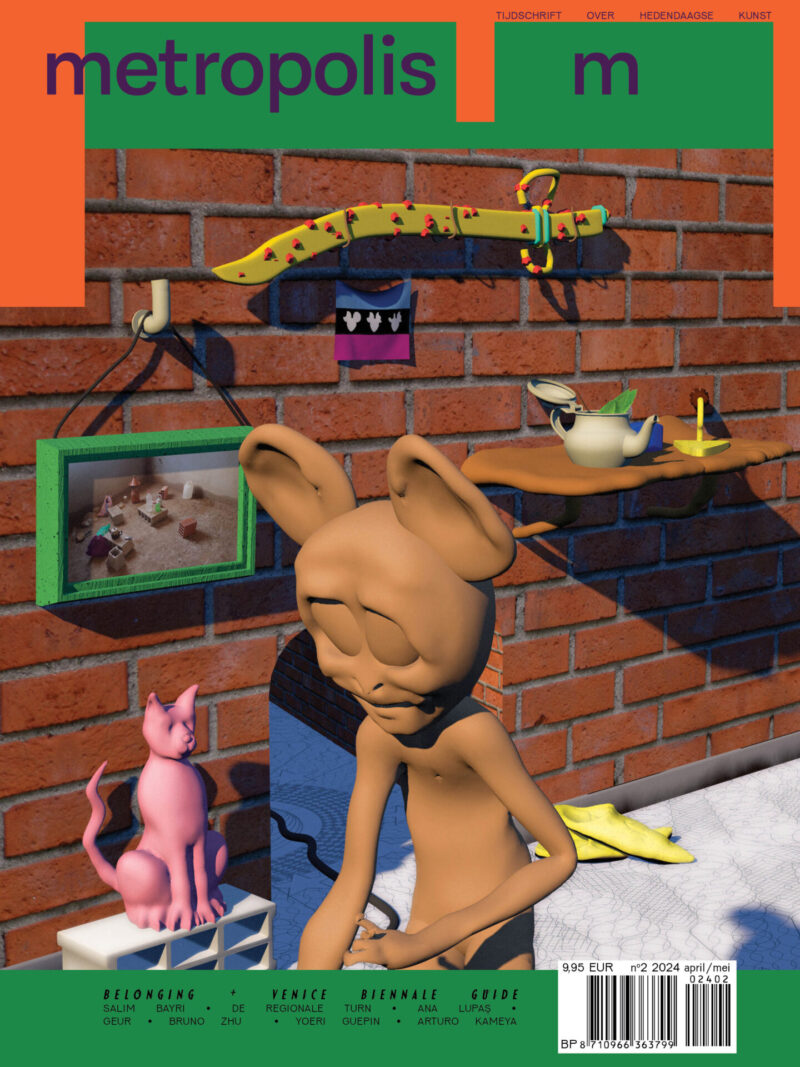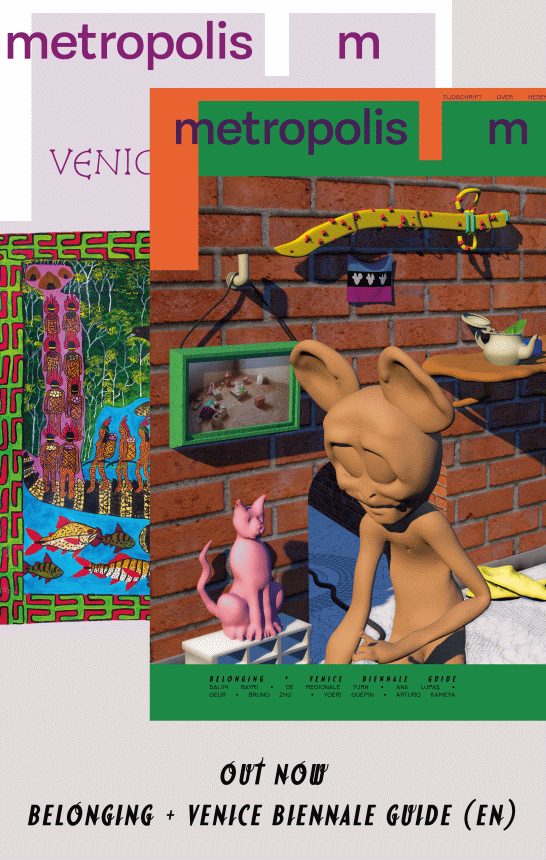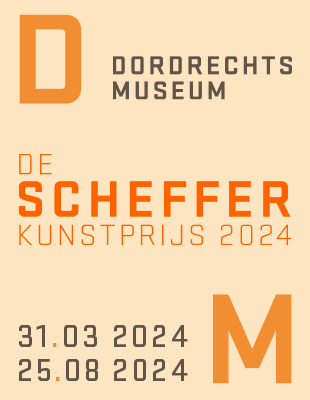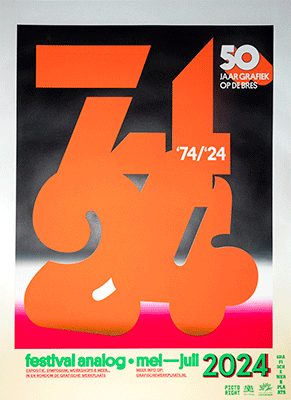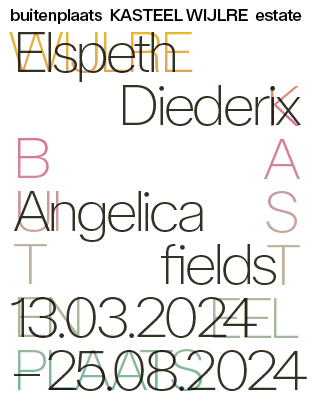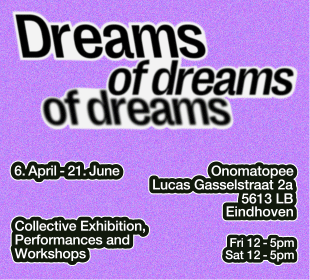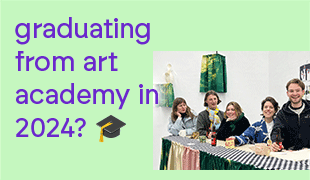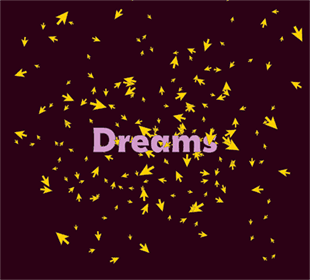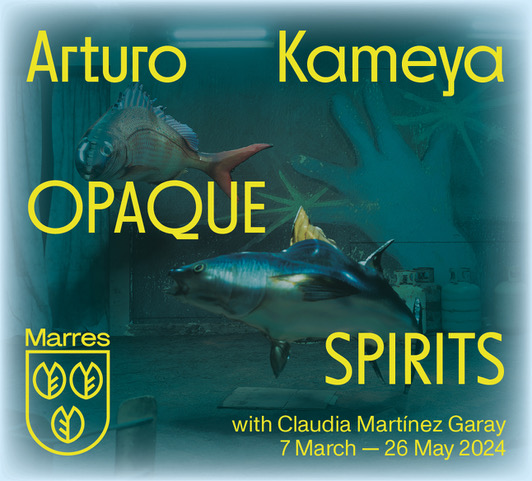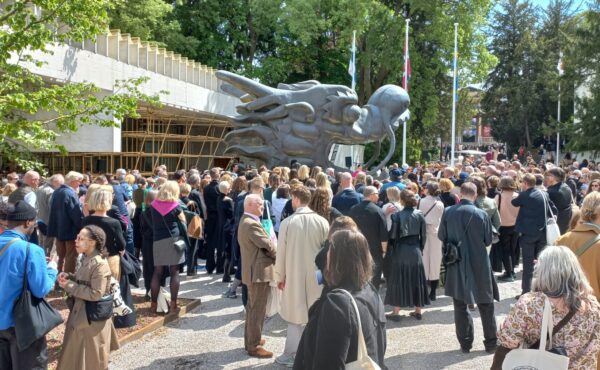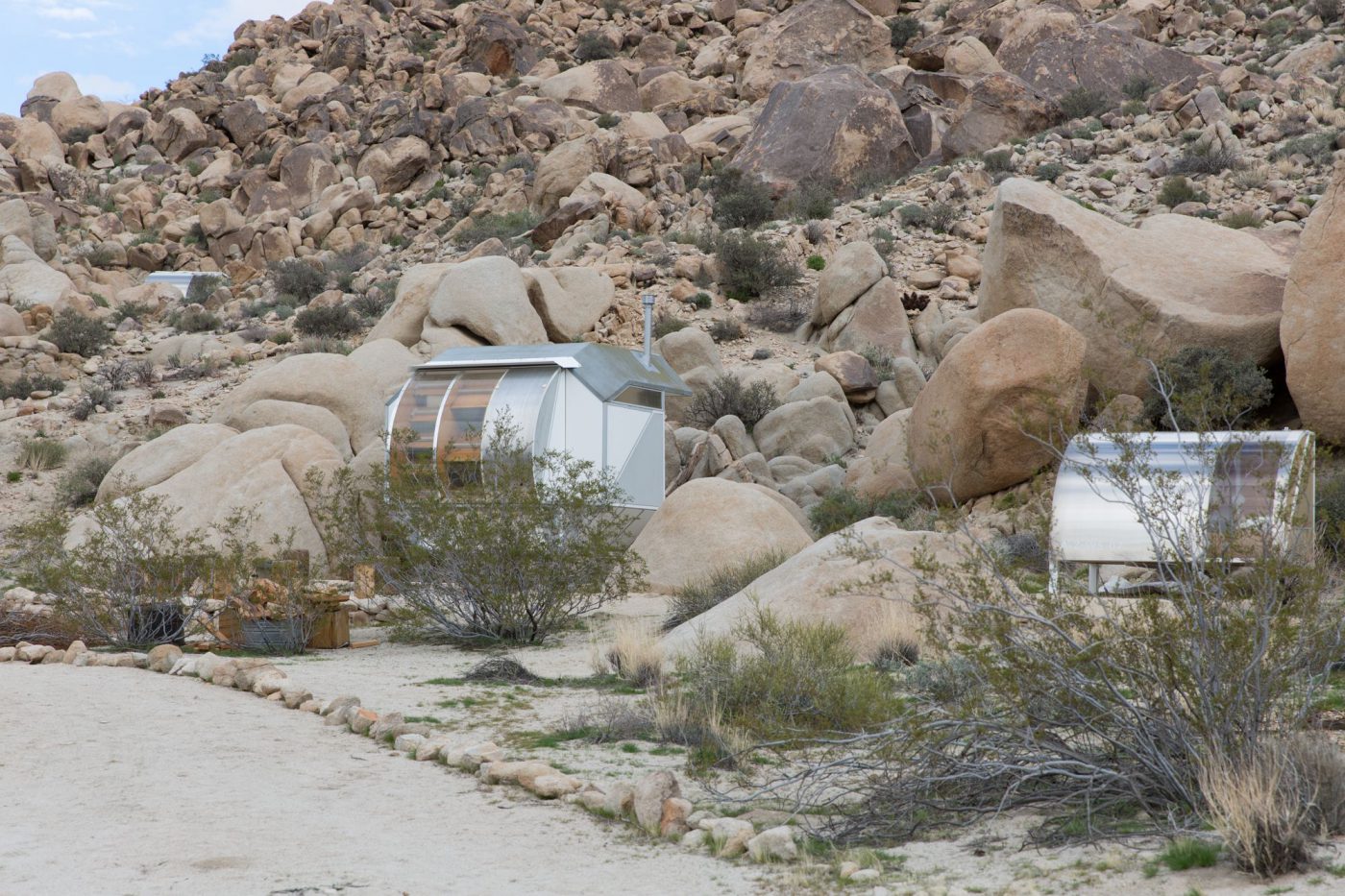
A-Z Wagons Stations
Makers of their own time – Chapter 2 A-Z West – Andrea Zittel
Metropolis M’s research fellow Jessica Gysel presents the second text in a series on alternative forms of cooperation and collaboration in queer & feminist cultures. Her first contribution was devoted to Salmon Creek Farm which was founded by Fritz Haeg in Northern California. Now she drives south towards Joshua Tree: the homeland of artist Andrea Zittel and her inspiring life project A-Z West. (images by Katja Mater)
Early in the morning I arrived at the magnificent site that is A-Z West, aka The Institute of Investigative Living, Andrea’s life work and the core of her artistic practice. The sun had just risen, and was reflected in the windows of the various workshops and Andrea’s house annex studio: a long, rectangular strip of buildings situated in the midst of the desert. The atmosphere was serene. Andrea had just come back from her morning walk with the dogs. I was just in time for ‘power hour’ she said: the communal work hour where everybody present at the site shares chores, like sweeping the sandy floors (it’s the desert after all), feeding the chickens, cleaning the outdoors kitchen space, and so on. Work life at A-Z West immediately proved to be well-orchestrated, with Andrea’s assistants Vanessa and Elena, a bunch of guests from the workshops, a girl from New Orleans, and some queer artists (who were busy welding metal) working together with the utmost concentration.
I got to know Andrea through High Desert Test Sites: a non-profit arts organization started in 2002 by Andrea and a bunch of collaborators. HDTS has always been dedicated to ‘‘learning from what we are not’’: a guiding principle inspired by the conviction that there are many ways to live your life, and that learning from others can offer new insights on ourselves and on our everyday environments. HDTS was built from scratch with almost no money but a lot of good intentions. It is mostly known for its residencies and for its bi-annual events, think film-screenings, exhibitions, talks, secret restaurants and collective weekends, such as Sound Camp. It also publishes field guides and other publications and organizes workshops exploring pit-fired ceramics or sun-printing cyanotype processes. Over the years it has invited and attracted artists from all walks of life to spend some time in the desert. Joshua Tree is on the art map now – and that is thanks to HDTS.
There’s only one concrete construction on the site of HDTS: a shared space for cooking and sanitary needs. Other than that the site is filled with Andrea’s famous A-Z Wagon Stations: temporary living shelters that artists and other visitors can use during their stay at A-Z West. Because the land of HDTS used to be very cheap, and because most projects happened in the open air, Andrea was able to fund the project using the money she earned with her commercial gallery practice for years.
[blockquote]HDTS has always been dedicated to ‘‘learning from what we are not’’: a guiding principle inspired by the conviction that there are many ways to live your life, and that learning from others can offer new insights on ourselves and on our everyday environments
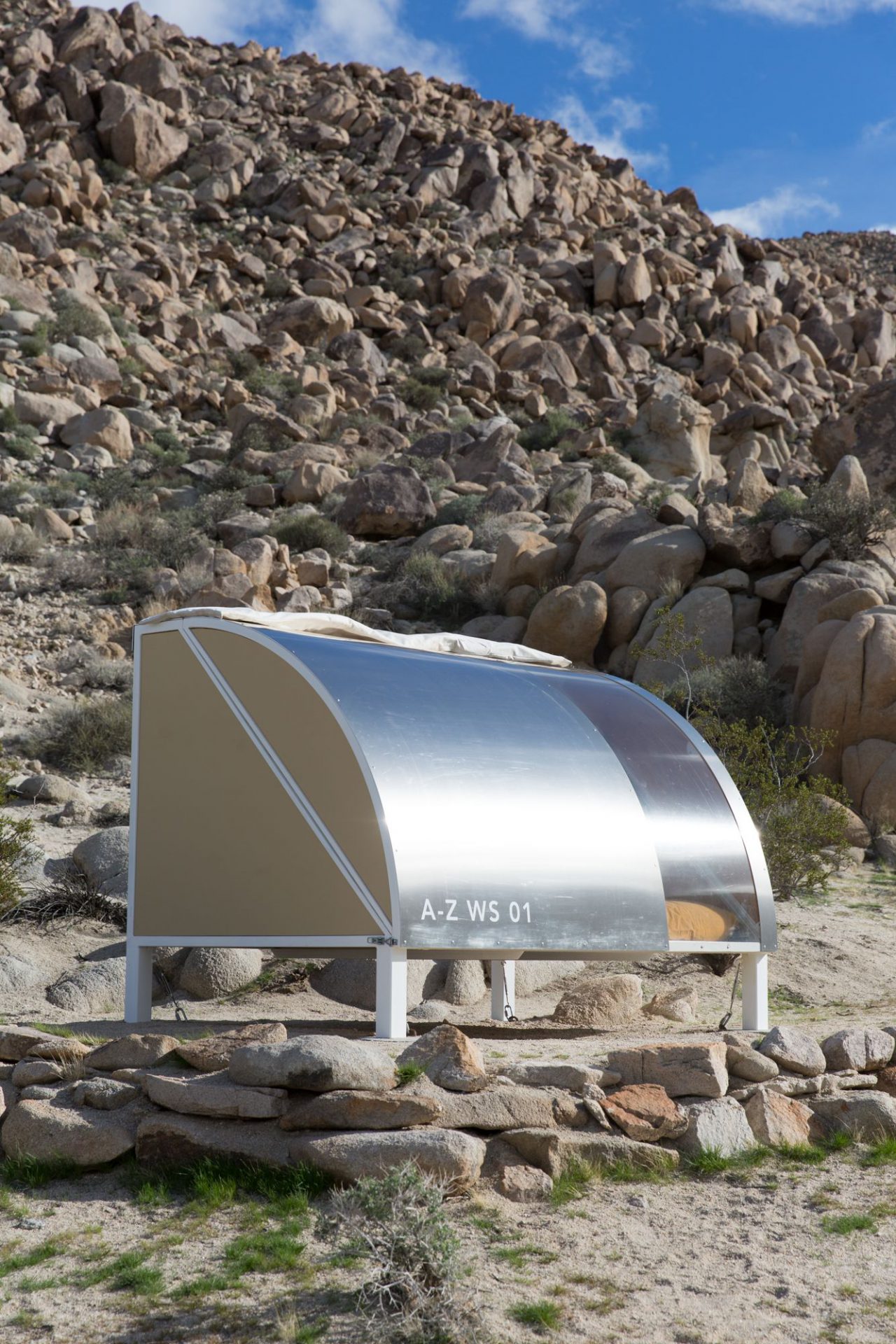
A-Z Wagon Station
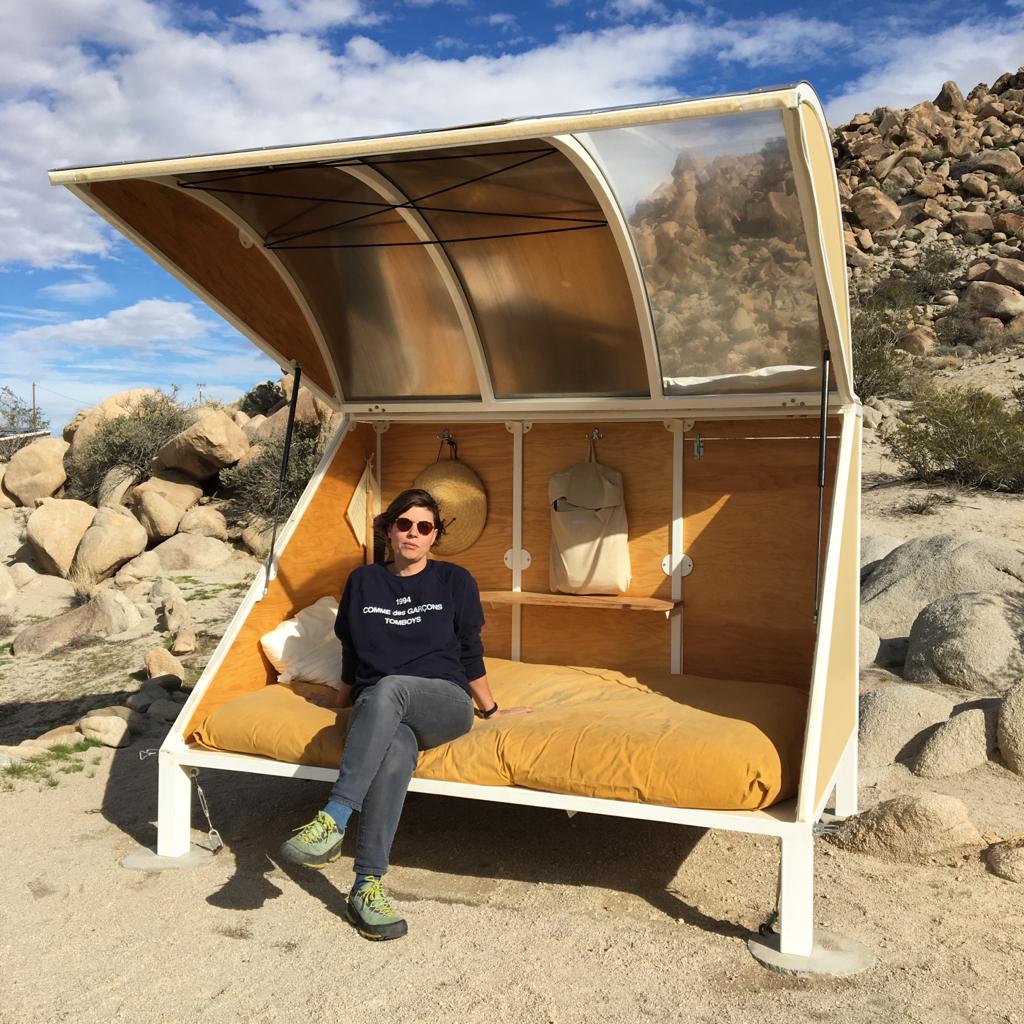
An A-Z Wagon Station on High Desert Test Site
How to live
The question of how to live has been guiding Andrea both in her artistic work and in her private life –these two domains are in fact totally intertwined. Andrea was born and raised in Southern California; her grandparents were ranchers who lived not too far away from where she now lives herself. She studied painting and sculpture at San Diego State University, followed by an MFA in sculpture at the Rhode Island School of Design. In the early 90s she established her practice in New York, with A-Z East as her personal highlight. A-Z East consisted of a small terraced house in Brooklyn that was turned into a public testing ground where she would prototype various designs for living. She lived with these prototypes; exploring their significance and limitations in her own day-to-day life and illustrating how arbitrary the way we choose to live our life often is. When she started to organize dinners for artist friends she became part of the Relational Aesthetics movement – unwillingly; she experienced the art world, and New York especially, as very suffocating.
The desert called and in 2000 she bought her first five-acre parcel that was the start of A-Z West. Most of these parcels came with a self sufficient cabin, kick-starting Andrea’s homesteading as an artist practice. Furniture, clothing and food: all became, and still are, subject of Andrea’s ongoing investigation of human nature and the social construction of needs. Over the years, she acquired more acres, safeguarding them from developers and speculation. One could say that she literally, acre-by-acre, built her own utopia.
‘I originally moved to the desert because I wanted my work to be more directly integrated into a non-art community and because I am from California, and had always intended to return to my roots. In essence not so different from the “showroom – testing grounds” that I had developed at A-Z East back in New York, but at A-Z West I felt more in my own element and culture. Because of the functional nature of my work it eventually made sense to start to create various kinds of infrastructure where people could experience living with my pieces for periods of time. I am also interested in exploring ways to be more autonomous as an artist – not only by creating my own context where people can experience and view my works, but also because I want to find ways to make my work more financially self-sufficient and independent from the larger art market.
I like working on things at A-Z West because I can extend my relationship with my work over a long period of time. When I make something to send out to an exhibition my relationship with that work is cut short – but if I can work on something and evolve it over several years it’s much more satisfying. Initially when I first moved here I thought that this would just be the test run and I’d go do a real thing somewhere else after. But it was so much more work than I ever could have imagined, that I realized that I couldn’t do this again. This is it. I’ll just make this as good as I can.’
'Because of the functional nature of my work it eventually made sense to start to create various kinds of infrastructure where people could experience living with my pieces for periods of time'
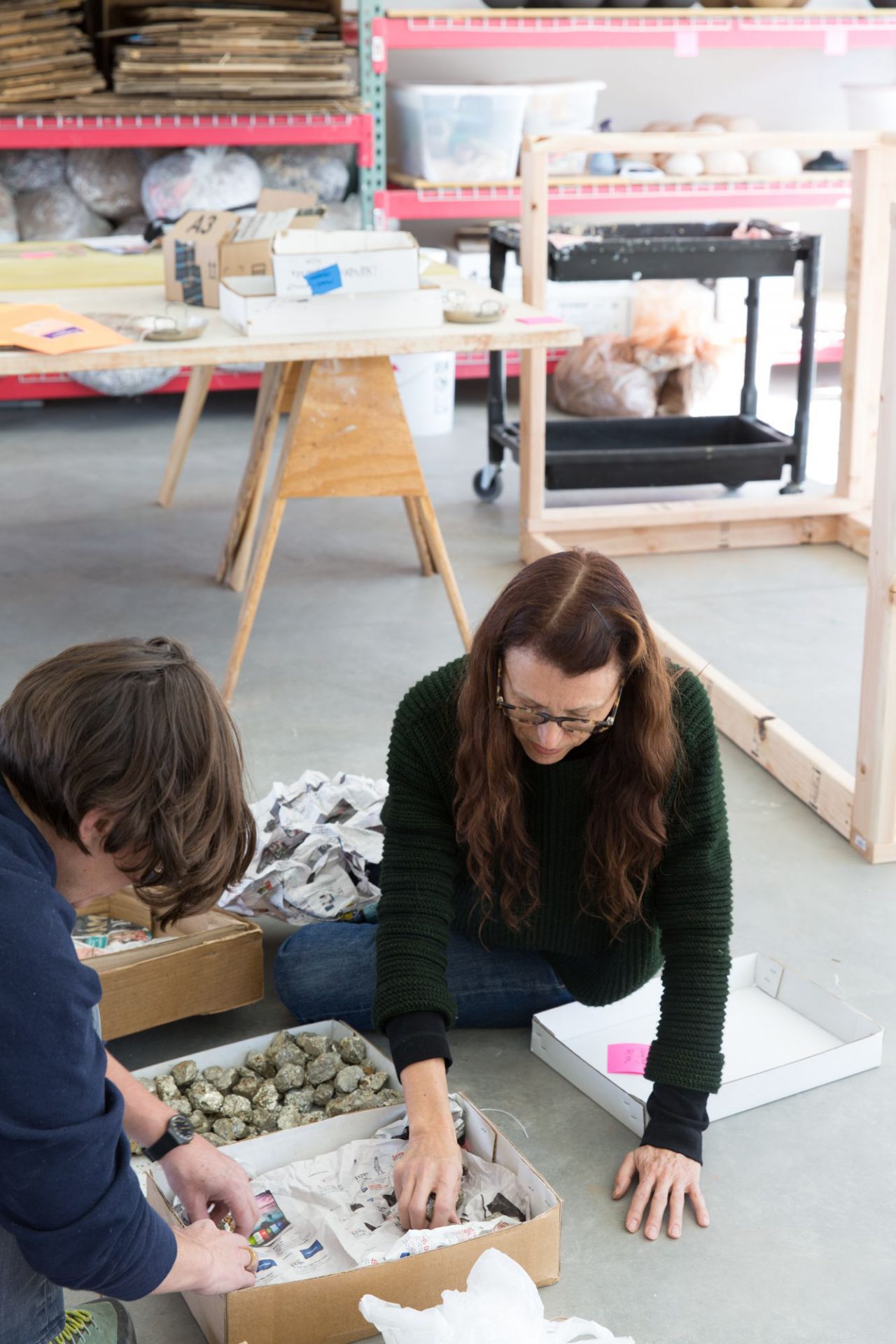
Andrea Zittel
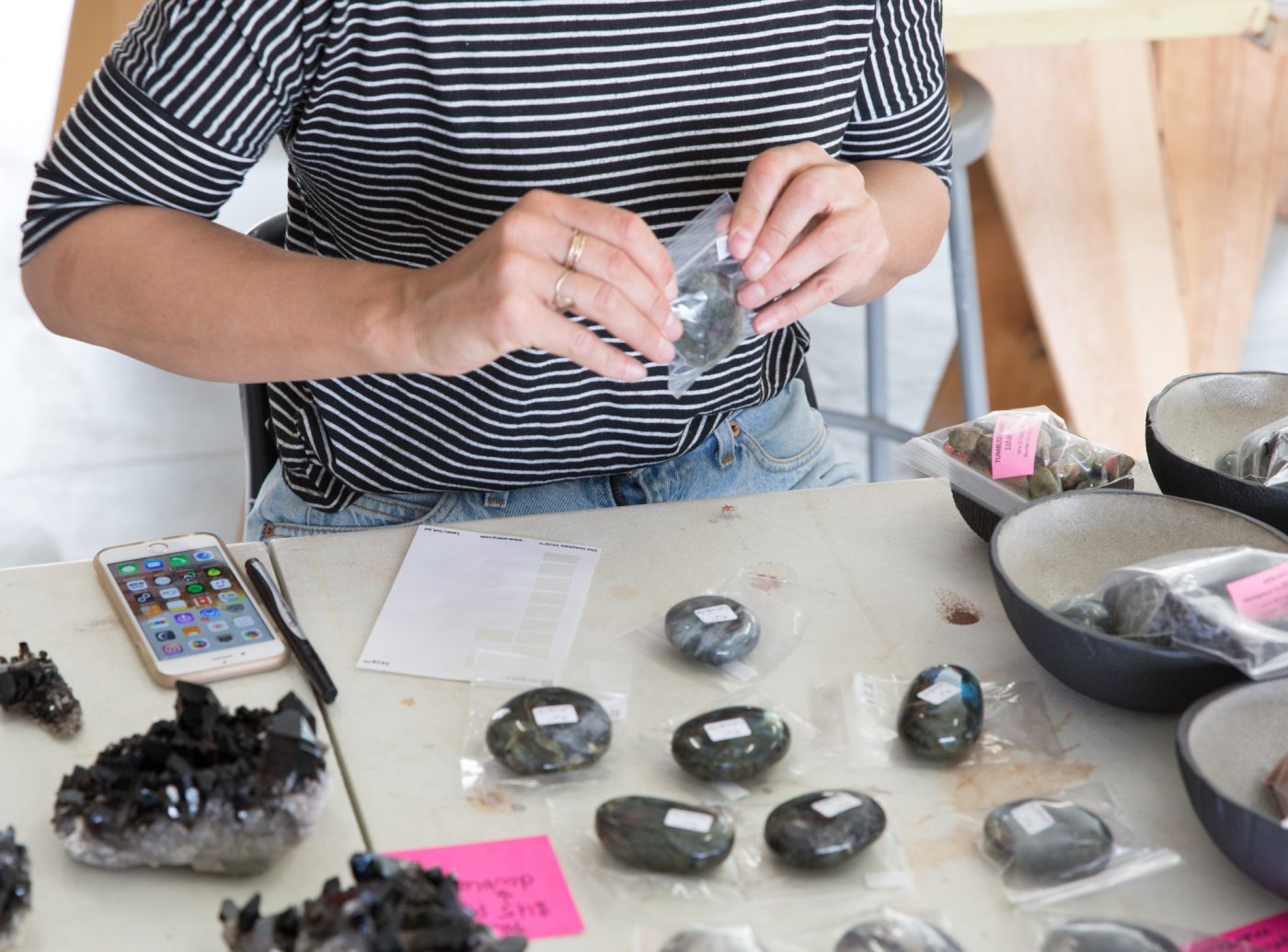
Sorting gems with Andrea
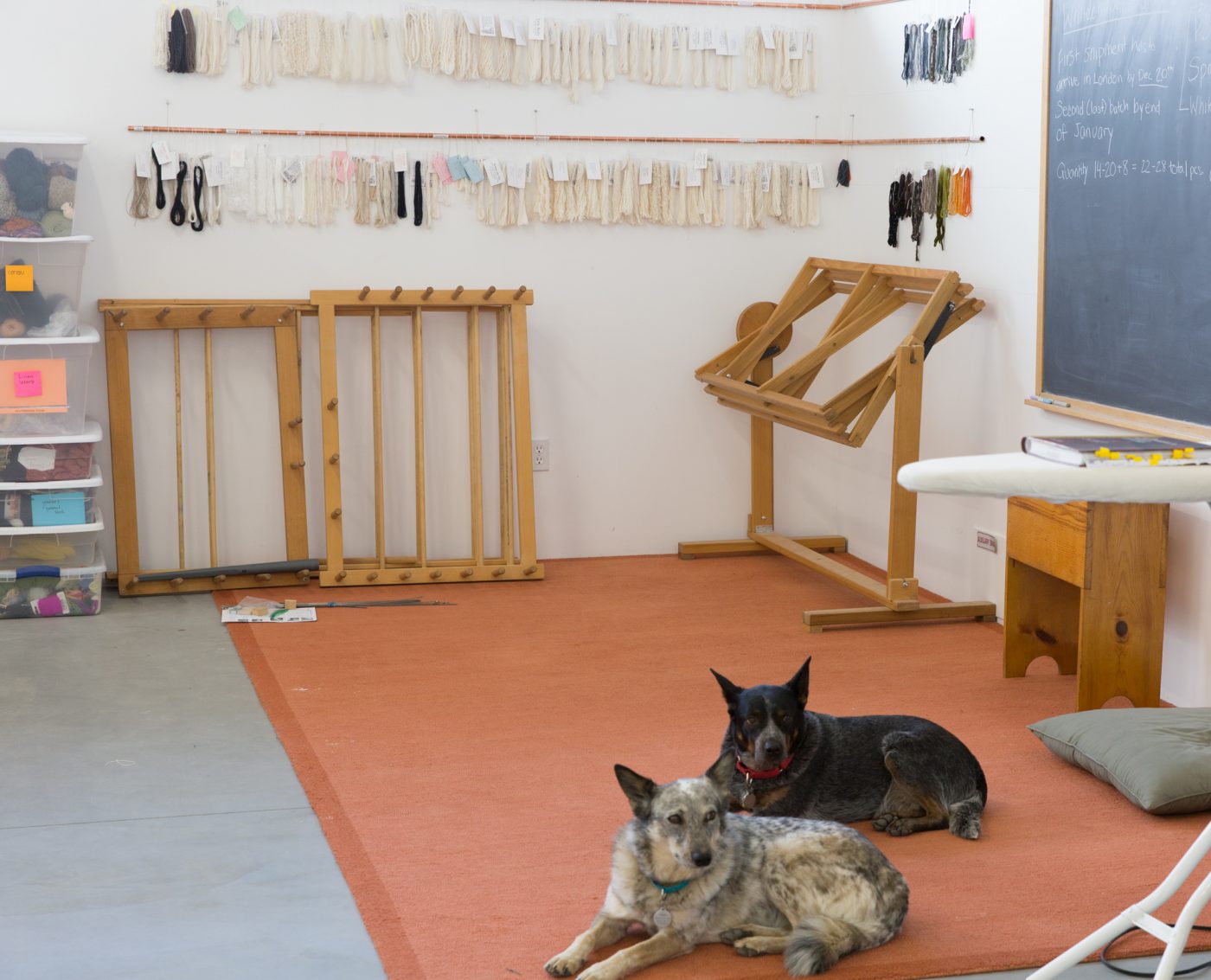
Andrea's dogs in the weaving studio
The A-Z West ‘‘collective’’
I was curious to find out how Andrea manages to run a whole compound with a bunch of people while being a celebrated artist with a blossoming solo career. The day I visited her in February 2017, her long-time gallerist Andrea Rosen had very abruptly decided to close the gallery. Andrea had just heard the news and was totally overwhelmed: what would this mean for the future of A-Z West? As we sat down sorting minerals that would be sold as part of a fundraiser for HDTS, we had a conversation about A-Z West’s past, present and future.
She started to tell me that even though she loved working on the gallery-exhibitions, it could also be quite exhausting. She felt the need to cut down on her institutional career and wanted to spend more time at home. Meanwhile running A-Z West was an ongoing puzzle. In search of sharing part of the ongoing workload, she founded the Work Trade Residency in 2016. A residency anyone can sign up for; if only you are prepared to work 15 hours per week for A-Z West in exchange for accommodation. The rest of the time you can spend the way you like.
‘We always say that we accept people based on what skills we need, but those skills can be somewhat random. For instance, we were trying to make a guide of the area and somebody applied who had worked for a magazine. This was perfect; she came to help us edit it. Sometimes we need skills that you wouldn’t expect at first. Also a lot of people arrive with no ceramics background and we are able to teach them in like a day or two how to make the bowls that our studio produces.’
The ceramic bowls called A-Z West Containers have been part of Andrea’s life for a long time. In the early 90s she began using them in her daily life for eating and drinking, and now they continue to serve as the sole dinnerware at A-Z West. They also double as an unlimited edition artwork: they are sold in several institutions all over the world in order to financially support A-Z West.
Weaving is another key element of Andrea’s practice. Eight years ago she set up a weaving studio, which now functions as a communal resource. Andrea maintains the looms and uses them for her own work, but if she’s not using them, anyone else is welcome to. If she needs something woven for one of her shows, she asks someone from the studio to work for her. It’s a win-win: Andrea enables the weavers to improve their skills while working on their own pieces, and the weavers help Andrea out when she needs extra assistance.
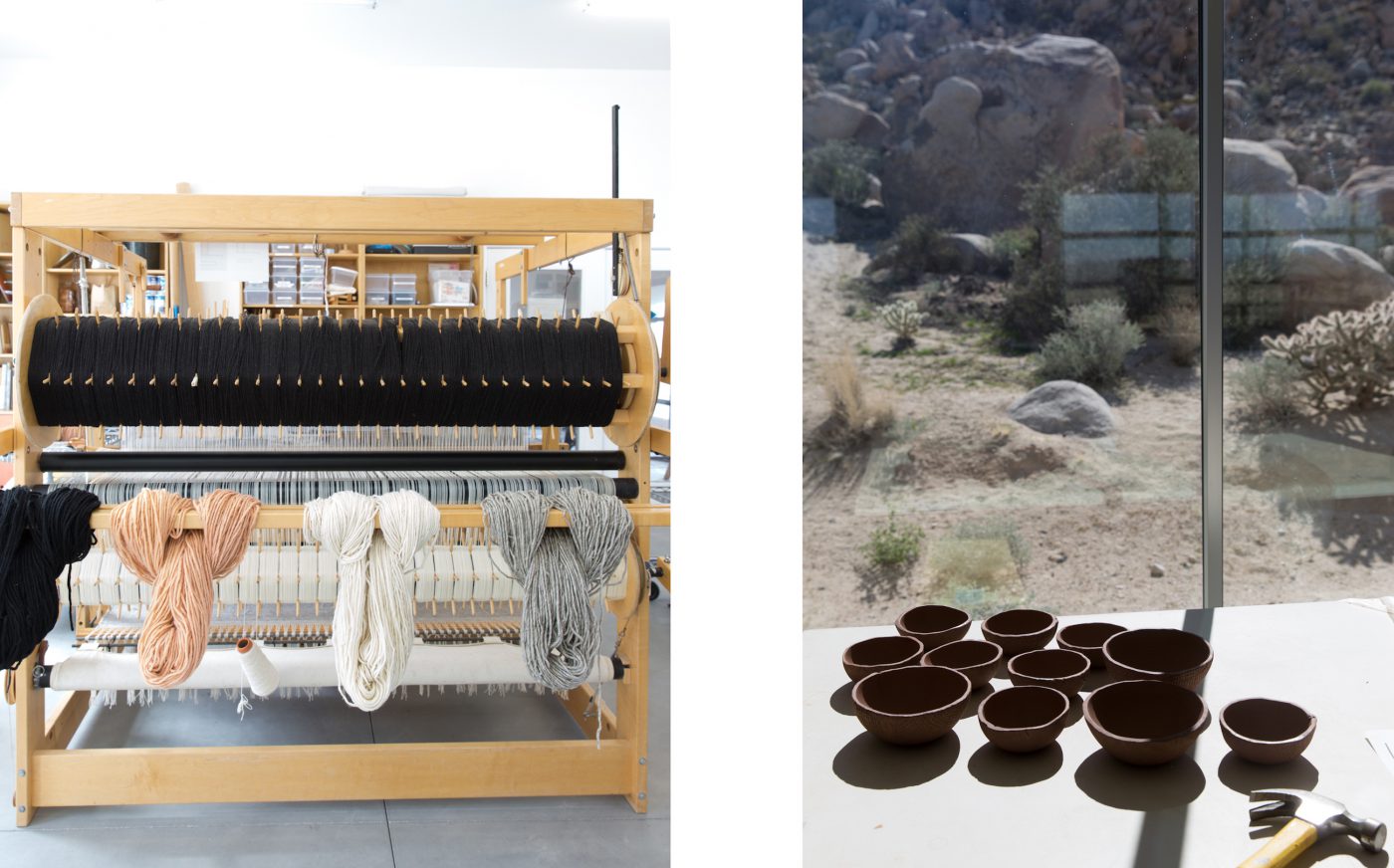
left: loom at A-Z West, right: A-Z West Containers
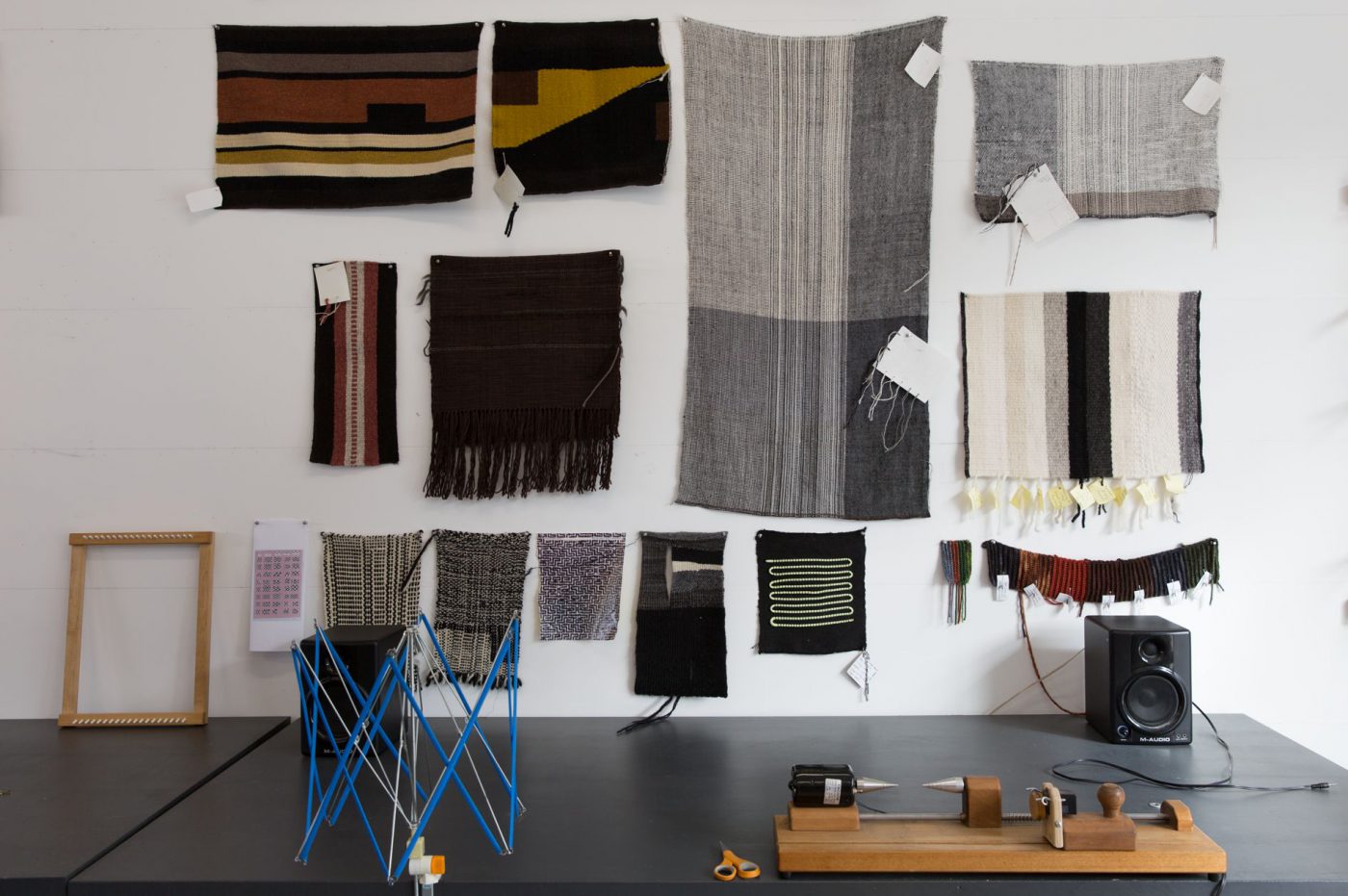
Weaving Studio
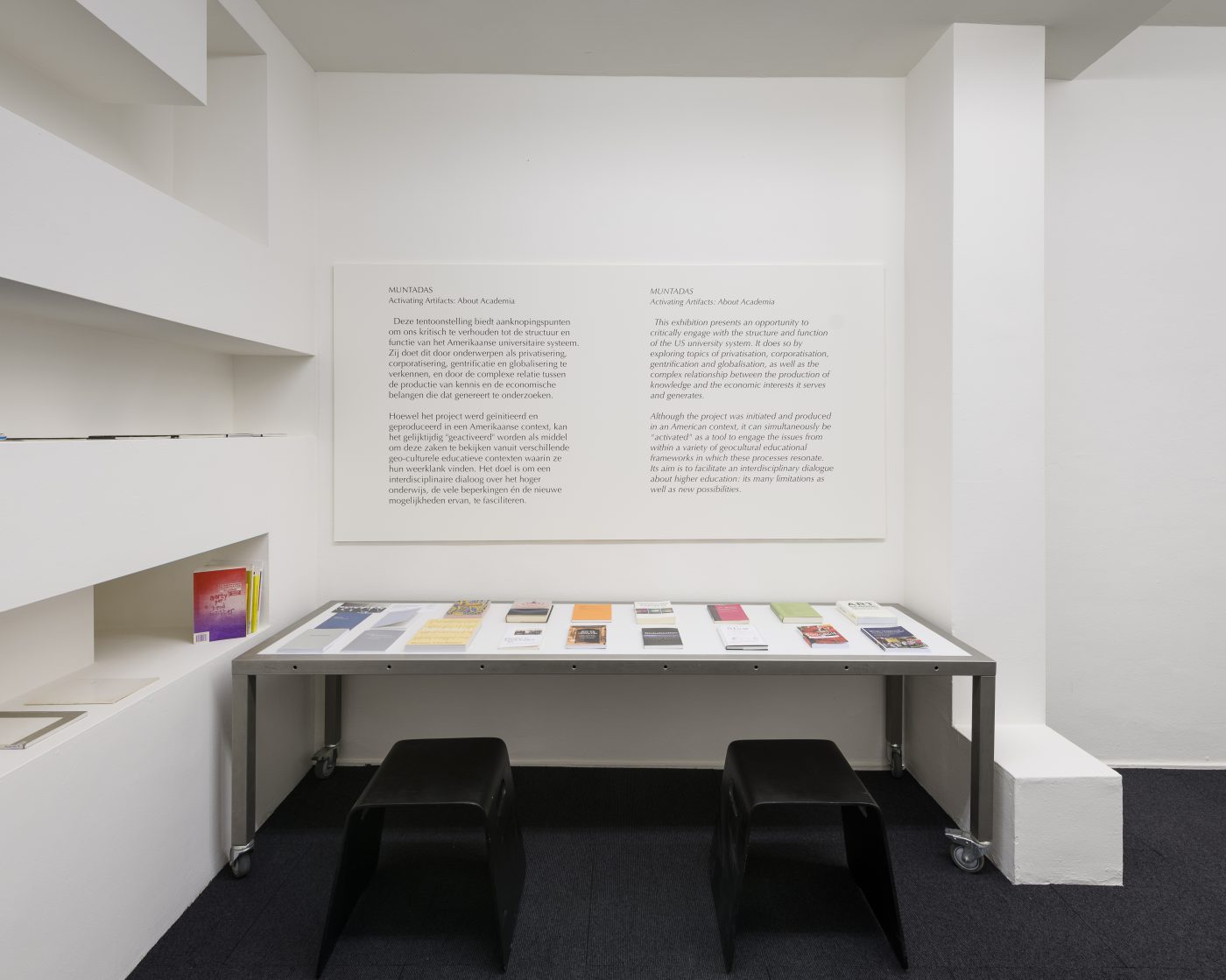
Muntadas, 'Activating Artifacts: About Academia', installatie bij De Appel, 2017. Fotograaf Cassander Eeftinck Schattenkerk.
‘I feel there’s just so much creativity here, and I have learned so much from the weavers who use this studio. All schools for weaving teach in different ways; using different techniques and focusing on different things. So having all these people with different backgrounds come here has really expanded my understanding of the craft.To me that’s where having a collective comes in: in establishing a layered authorship by having multiple authors.
I don’t know if ‘‘collective’’ is the right word. But there is a kind of collective knowledge that is built here: everybody is a free agent, but we are also reacting to each other. There are protocol sheets for almost every activity at the compound; written down instructions that address every single problem that has occurred.’
When I asked her about models that served as inspiration for A-Z West, Andrea referred to Arcosanti: the experimental town that was initiated by architect Paolo Soleri. Respectfully integrating its architecture into Arizona’s ecology, the project is an example of what Soleri coined ‘arcology’. The town’s bronze bell-casting business is still very profitable; it offers a steady income up to this day. Another, more local example of an initiative that inspires Andrea is Integratron: once built by scientist George van Tassel as an electrostatic generator that would enable time-travel. It was now turned into a new age Sound Bath run by three sisters. Andrea:‘It kind of makes no sense and yet it works beautifully. It’s like alchemy or something. I love stuff like that. And I like making things and putting them out for other people to change.’ She also names Frank Lloyd Wright’s estate Taliesin, and of course Donald Judd’s Chinati in Marfa as ongoing sources of inspiration.
Daily routines
Wearing the same set of clothes and eating from the same ceramic bowls every day, I imagined Andrea to have an interesting daily schedule. I was curious to hear more about her every-day rituals and routines.
‘Tuesdays, Wednesdays and Thursdays are heavy studio days. I get up at 6:30 or 7. I meditate, eat breakfast, walk the dogs, feed the chickens and try to read and, if there’s time, I clean up, haha. Studio starts at 10, and from 10 to 11 we always have our maintenance hour. At 11 the day starts, and then we work all day. At some points, I just want to be alone. So I disappear. Monday and Friday are therefore more free and open days. When people work for me it’s important that they have some free time too. Nobody wants to work 5 days a week. So on Monday and Friday people can still come to work if they have things that they need to work on, but for the most part those days are more fluid. I love these days when I feel I can do my own work, so I try not to schedule too many meetings. Saturdays and Sundays are all about my son and spending time with him. He’s in school in LA and comes home every weekend.I love reading and researching, but in reality, most of my time is spent administering these larger entities, and doing a lot of maintenance.
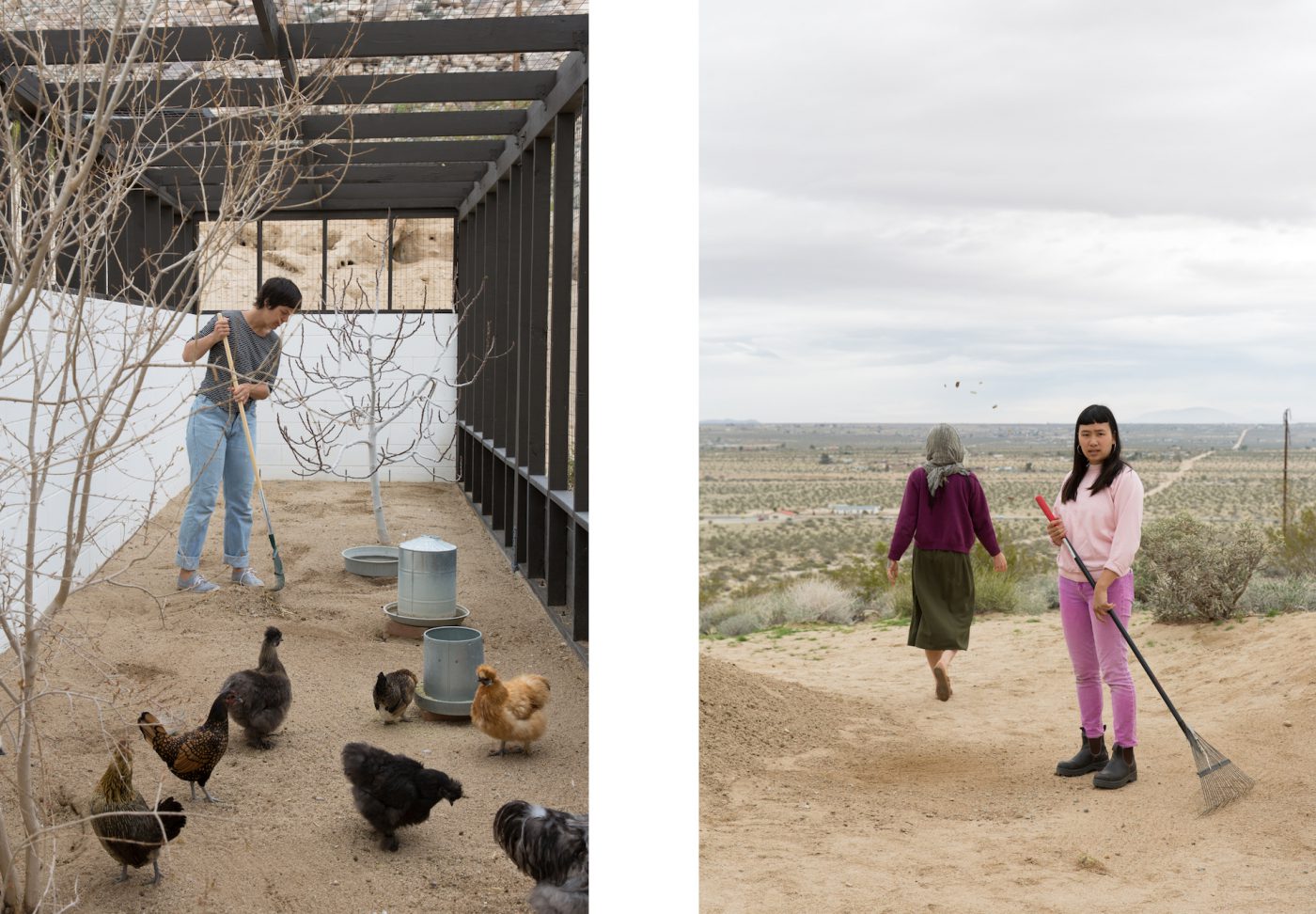
Maintenance hour in full swing at A-Z West
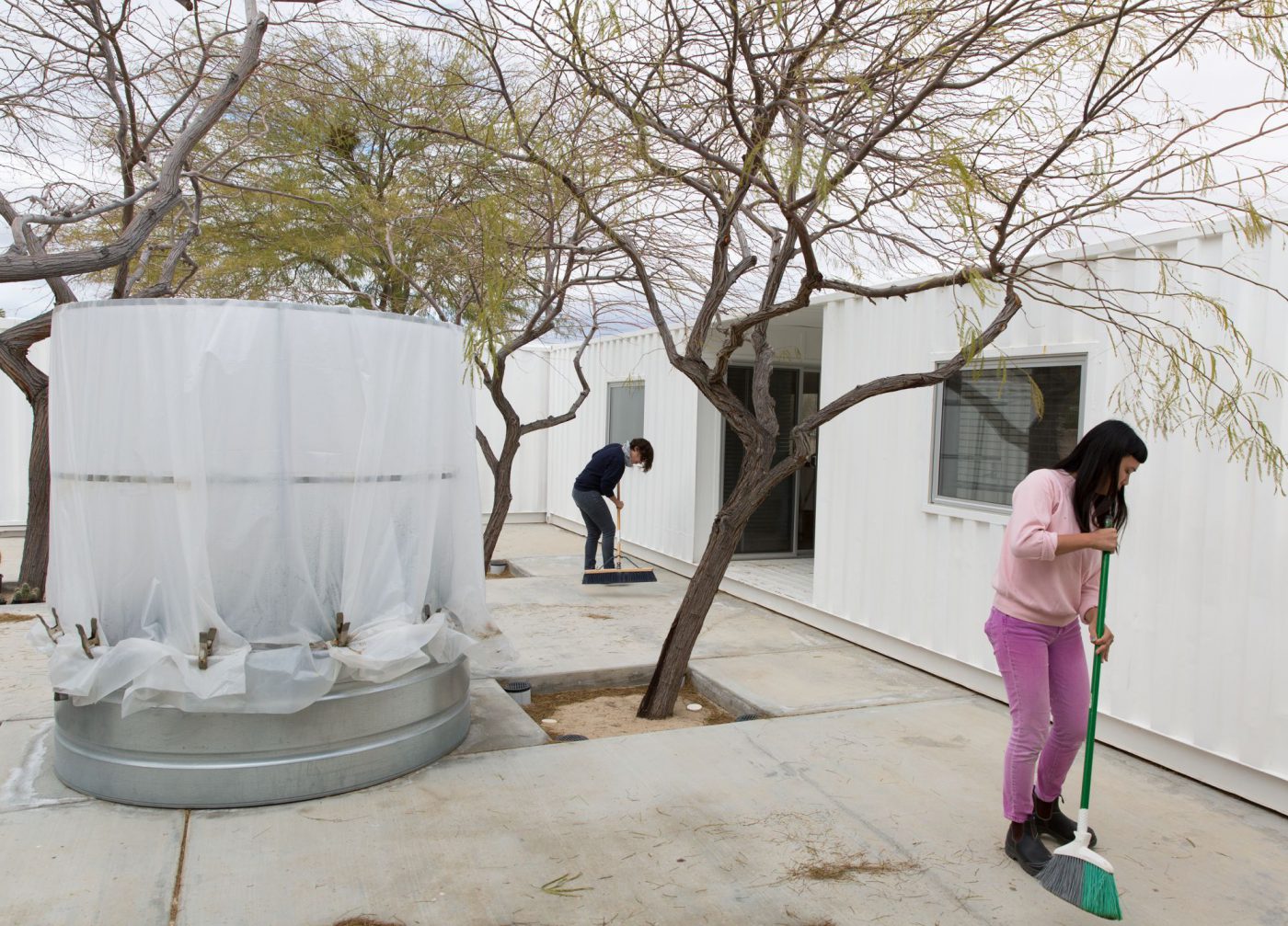
Maintenance hour
Time to reflect
During Fall 2020 we talk again, in the midst of the Covid-19 turmoil. Andrea tells me that the first wave of Corona, earlier last year, halted everything. It was the first time ever she was able to have a real break. Without needing to manage the people at A-Z West, or to work on shows and deal with deadlines, she finally had time to go for long walks with her dogs and spend time with her partner Katy and her son. She loved it. It also gave her time to reflect on her work and the current state of the art world. She calls it ‘a speculative venture where most artists are trying carving a name for themselves’. But what is the meaning in that?
‘As an older generation artist, it seems that the context that I originally aspired to be part of doesn’t exist anymore. Art in the current market has become such an elitist commodity. The artworld feels really complicated right now. I mean it was always complicated, but artists used to be more aware of the contradictions between the creative act and its commodification. Clearly I’m part of this world because I still work with four large galleries – and I have very positive nurturing relationships with many people in this system – but I think overall we all feel somewhat oppressed by the prescribed “value” of art that now often ends up being seen mostly along the lines of finances and investment.’
It would be such a luxury to not have to worry about money all the time, she continues, and to be able ‘to figure out what actually matters’.
‘You know, when you have so many things in the air, it just becomes too many things. I’ve managed to keep everything afloat so far but now I feel a little burned out. Oh God! I’m known for being a micro-manager, but I might even be done with that. Anyway, now that people see the end of Covid and things are starting up again I just can’t go back to the way is was before. I can’t step back into that. I have a feeling a lot of people may be feeling like this right now. But in any case I’ve decided to let go of A-Z West and to scale my own life down into something that feels manageable and intimate. Also that will allow for more personal and creative freedom.’
I respond that this sounds like a really radical decision for her to make.
‘That’s how I wound up here in the first place. Back then, I was willing to walk away from everything and to move across the country to what felt like the middle of nowhere– to be all alone and just figure it out. I think that taking risks like that are important. So is having really big changes happen periodically in one’s life. I’ve been doing one thing (running A-Z West) for 20 years, so I’m really exited to think about a change.
A-Z West has grown to the point where it makes sense as a larger public institution so it can accommodate more people than just myself – I’m now exploring ways to do this by looking for an institution or an entity that will take over the running of A-Z West, which will allow me personally to have a more scaled back and intimate focus on the act of “living” as my practice itself.’
'I’m now looking for a more scaled back and intimate focus on the act of “living” as my practice itself’
Andrea thinks it would be really great and beautiful if a school, museum or an institution could take over A-Z West and turn it into an amazing resource and community for artists. She hopes that whoever should buy it keeps her staff and continues the Work Trade Residency. She’s currently talking to the Palm Springs Museum; the museum is very interested, but given the nature of the project she and the museum are looking for additional collaborators or partners.
‘I’m setting myself up to not have to do anything professionally after I finish here and to go dark for a while. I definitely won’t be retiring. I don’t want to sound dire but with everything going on politically and environmentally who knows what the future of humanity is going to look like. It makes no sense to knock yourself out simply be remembered or for the sake of legacy when it’s not a given any more that there will be anyone to remember you.’
She tells me she’s looking to buy a new place to live. Ironically, she says, Covid-19 has driven up the real estate prices. She wants to live in a small house, with a studio for her and one for her partner. No more multiple structures, houses and pieces of land.
‘I keep looking at the houses that don’t sell and just sit on the market because they aren’t fashionable or attractive enough. Or not attractive to the right people with the money to buy them and I’m really intrigued by how it would be to get a really ugly house and redeem it? Or to just live in it. Rethinking values, I like that idea.’
All images by Katja Mater
THIS RESEARCH BY THE RESEARCH FELLOW IS MADE POSSIBLE BY THE MONDRIAN FUND
Jessica Gysel
is schrijver, kunstenaar, activist en oprichter van tijdschriften Girls Like Us en Girls Heart Brussels